The Dual-Clutch Transmission (DCT) is a revolutionary automatic system that combines the precision of a manual transmission with the convenience of automatic shifting, offering fast and efficient gear changes.
What is a Dual-Clutch Transmission?
A Dual-Clutch Transmission (DCT) is an advanced automatic system that combines the efficiency of a manual transmission with the convenience of automatic shifting. It uses two clutches to manage odd and even gear sets, enabling seamless and rapid gear changes. This design allows the DCT to pre-select the next gear while the current one is engaged, ensuring smooth transitions without interrupting power delivery to the wheels.
History and Evolution of DCT
The Dual-Clutch Transmission (DCT) originated in the 1980s, with Porsche introducing the first concept. However, it wasn’t until the late 1990s that DCTs entered production, starting with the Audi TT and Volkswagen Golf. Over time, DCTs evolved to offer faster shifting and improved efficiency. Today, they are widely used in high-performance vehicles, with advancements like wet and dry clutch systems further enhancing their capabilities and popularity in modern automotive engineering.

Design and Functionality of DCT
DCTs feature two clutches controlling separate gear sets, enabling seamless shifts. One clutch handles odd gears, while the other manages even gears, combining manual precision with automatic convenience for smooth performance.
How DCT Works: Two Clutches and Gear Sets
DCTs use two clutches to manage separate gear sets: one for odd gears and one for even gears. While one clutch engages the current gear, the other pre-selects the next, enabling rapid, seamless shifts. This dual system eliminates the need for a torque converter, combining manual transmission precision with automatic convenience for faster acceleration and improved efficiency.
Types of DCT: Wet and Dry Clutch Systems
DCTs are categorized into wet and dry clutch systems. Wet clutches are bathed in oil for cooling, ideal for high-torque engines, while dry clutches operate without oil, suited for lower torque applications. Wet systems offer durability but are heavier, while dry systems are lighter and more fuel-efficient, each tailored for specific performance and efficiency needs.
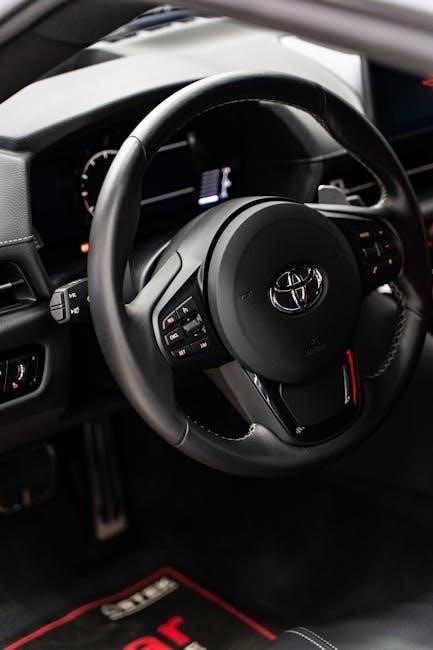
Advantages of Dual-Clutch Transmission
DCT offers faster gear shifting, enhanced performance, and improved fuel efficiency compared to traditional automatics, combining the benefits of manual and automatic transmissions seamlessly.
Faster Gear Shifting and Improved Performance
Dual-Clutch Transmissions (DCTs) deliver rapid gear changes, enhancing acceleration and driving dynamics. By pre-selecting the next gear, DCTs minimize lag, providing instantaneous shifts that improve performance. This seamless operation allows for quicker response times, making DCTs ideal for high-performance vehicles. The system’s ability to engage the next gear before it’s needed ensures smooth transitions, combining the precision of a manual with the convenience of an automatic.
Better Fuel Economy Compared to Automatic Transmissions
Dual-Clutch Transmissions (DCTs) often achieve better fuel economy than traditional automatics due to their efficient gear-shifting mechanism. Without a torque converter, DCTs reduce energy loss, optimizing fuel consumption. This makes them particularly effective in city driving and for drivers prioritizing efficiency. Combined with their lightweight design, DCTs balance performance and eco-friendliness, offering a cost-effective solution without compromising on power or responsiveness.
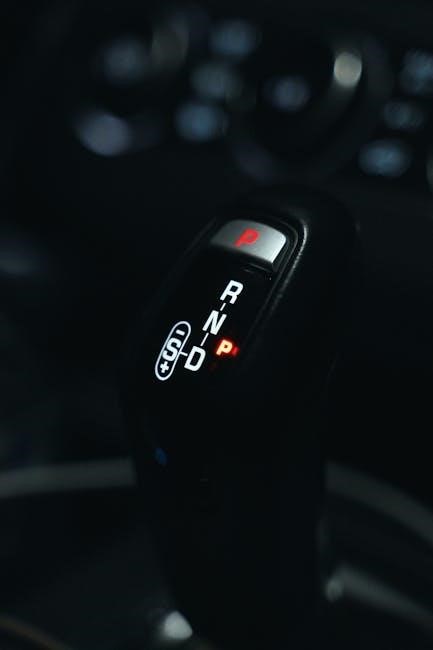
Disadvantages and Challenges of DCT
Dual-Clutch Transmissions can be complex and costly to repair. They may also experience reliability issues, especially in stop-and-go traffic, which can affect overall driving satisfaction and longevity.
Complexity and Higher Cost
Dual-Clutch Transmissions are more complex than traditional automatics, featuring two clutches and advanced electronics. This complexity often leads to higher production and repair costs. Additionally, the sophisticated hydraulic and electronic systems require specialized tools and expertise for maintenance, further increasing expenses. While DCTs offer superior performance, their intricate design and higher price point can be a drawback for many consumers seeking affordable options.
Potential Reliability Issues
Dual-Clutch Transmissions can experience reliability challenges, particularly in high-stress driving conditions. Issues such as erratic shifting, hesitation, or premature wear of clutch components have been reported. Additionally, software glitches in the control systems can lead to inconsistent performance. While manufacturers have made improvements, some DCTs still face criticism for lacking the dependability of traditional automatic or manual transmissions, especially in non-performance-oriented vehicles.
Comparison with Manual and Automatic Transmissions
DCTs bridge the gap between manual and automatic transmissions, offering better fuel efficiency than automatics and smoother performance than manuals, making them a versatile option for drivers.
DCT vs. Manual Transmission
DCTs offer faster and smoother shifting compared to manual transmissions, enhancing performance and fuel economy. However, manuals provide better driver engagement and lower costs. DCTs use hydraulic systems to pre-select gears, reducing lag, while manuals rely on driver input for gear changes. DCTs are more complex and expensive but deliver superior convenience and efficiency, making them ideal for high-performance applications.
DCT vs. Traditional Automatic Transmission
DCTs outperform traditional automatics with faster, smoother gear shifts and better fuel efficiency. Unlike automatics that use a torque converter, DCTs employ two clutches for pre-selecting gears, enabling quicker transitions. While traditional automatics are simpler and heavier, DCTs offer superior performance and efficiency, making them ideal for high-performance vehicles despite their higher complexity and cost.
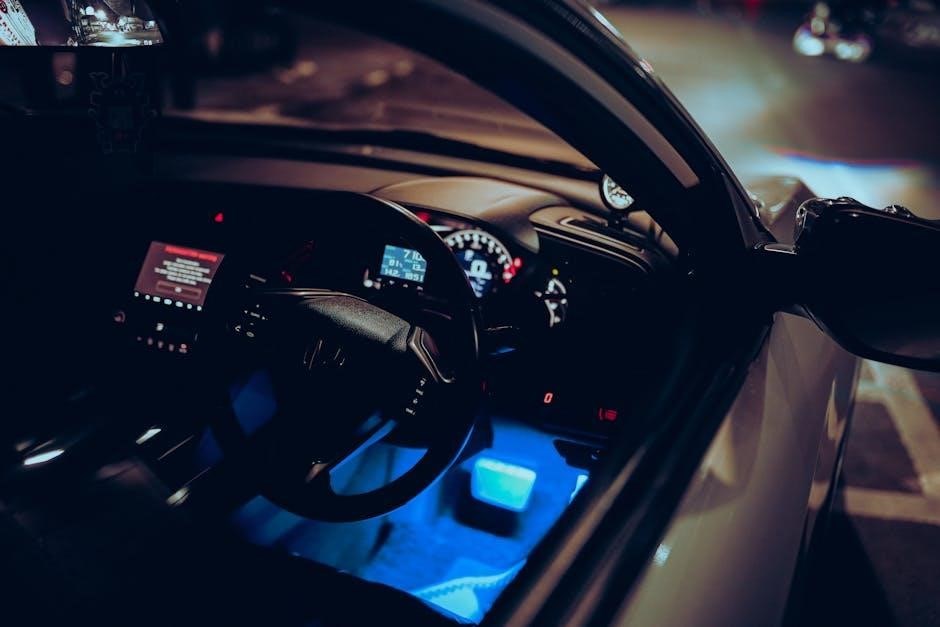
Driving Experience with DCT
DCT provides smooth, seamless gear changes, combining the control of a manual with the convenience of an automatic. It delivers quick shifts and an engaging drive experience.
Drivers enjoy responsive acceleration and reduced lag, making it ideal for both city driving and high-performance scenarios.
Smooth and Seamless Gear Changes
DCT ensures smooth, uninterrupted power delivery by pre-selecting the next gear while the current one is engaged. This results in rapid, seamless transitions without torque loss. The dual-clutch mechanism allows for quick shifts, making acceleration feel more direct and responsive. Drivers experience a refined, jerk-free ride, especially in automatic mode, while manual mode offers precise control, enhancing the overall driving experience with minimal lag and maximum efficiency.
Tips for Driving a Car with DCT
- In automatic mode, let the car shift gears on its own to avoid wear and tear.
- In manual mode, use paddle shifters or the gear selector for precise control.
- Downshift before braking to maintain control and efficiency.
- Avoid riding the clutch unnecessarily, as DCTs still use clutches internally.
- Be gentle with acceleration to prevent abrupt shifts and wear on the transmission.
- Get familiar with the car’s behavior, as DCTs can feel different from traditional automatics or manuals.
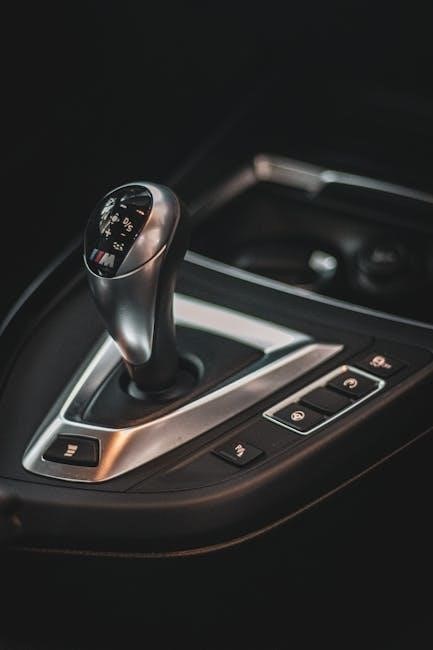
Applications and Popular Cars with DCT
Popular in high-performance vehicles, DCTs are found in models like the Volkswagen GTI, Hyundai Elantra N, and various BMW and Audi sport models.
Cars That Use Dual-Clutch Transmission
Dual-Clutch Transmissions are widely used in high-performance and sports cars, such as the Volkswagen GTI, Hyundai Elantra N, BMW M3, Audi S3, and Porsche 911. These systems are also found in Ford Mustang models, Kia Stinger, and Mercedes-AMG vehicles, offering a blend of speed and efficiency. Additionally, DCTs are popular in lightweight sports cars like the Mazda MX-5 Miata, enhancing driving dynamics and responsiveness.
Performance and Efficiency in High-Performance Cars
Dual-Clutch Transmissions excel in high-performance vehicles, delivering rapid gear shifts and seamless acceleration. They enhance fuel efficiency while maintaining sporty dynamics, making them ideal for cars like the Volkswagen GTI and Hyundai Elantra N. DCTs optimize torque delivery, ensuring instant power transfer during acceleration, which is crucial for racing and spirited driving conditions. This balance of efficiency and performance makes DCTs a preferred choice for modern sports and luxury cars.
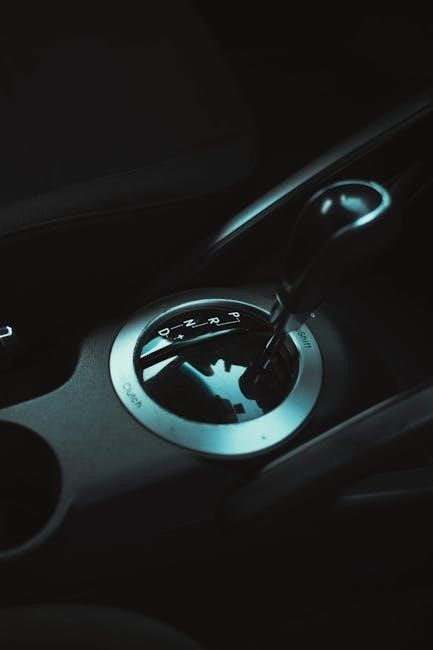
Maintenance and Care for DCT
Regular servicing and proper care are essential for DCT longevity. Use high-performance DCT fluid to lubricate moving parts and prevent wear. Avoid extreme driving conditions to maintain optimal performance and durability.
Importance of DCT Fluid
DCT fluid is specifically designed to lubricate the complex components of dual-clutch transmissions, ensuring smooth gear shifts and preventing wear. Regular fluid changes are essential to maintain optimal performance, as DCTs rely on precise hydraulic control for seamless operation. Using the correct high-performance fluid prevents overheating and extends the transmission’s lifespan, while improper fluid can lead to mechanical failure and reduced efficiency.
Best Practices for Longevity
Proper maintenance is crucial for extending the life of a DCT. Regular fluid changes, avoiding extreme driving conditions, and following the manufacturer’s service schedule are essential. Ensuring the transmission operates within optimal temperature ranges prevents damage. Additionally, avoiding aggressive driving and abrupt acceleration can reduce wear on the clutches and gear sets, contributing to a longer and healthier transmission lifespan.
Future of Dual-Clutch Transmission
The future of DCTs lies in technological advancements and hybrid/electric integration, enhancing fuel efficiency and performance while maintaining quick, seamless gear changes in next-gen vehicles.
Advancements in DCT Technology
Recent advancements in DCT technology focus on improving efficiency and reliability. Enhanced software algorithms optimize shifting patterns, reducing lag and improving responsiveness. Integration with hybrid systems is also on the rise, combining DCTs with electric motors for better fuel economy. Additionally, lightweight materials and advanced lubrication systems are being developed to extend transmission lifespan and reduce maintenance needs.
Hybrid and Electric Integration
DCT technology is increasingly integrated with hybrid and electric systems to enhance efficiency. By combining DCTs with electric motors, vehicles achieve smoother transitions between electric and combustion power. This integration supports reduced emissions and improved fuel economy, making DCTs a key component in modern hybrid and electric vehicles.